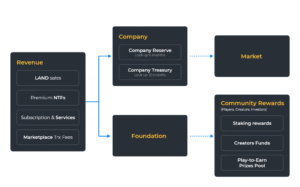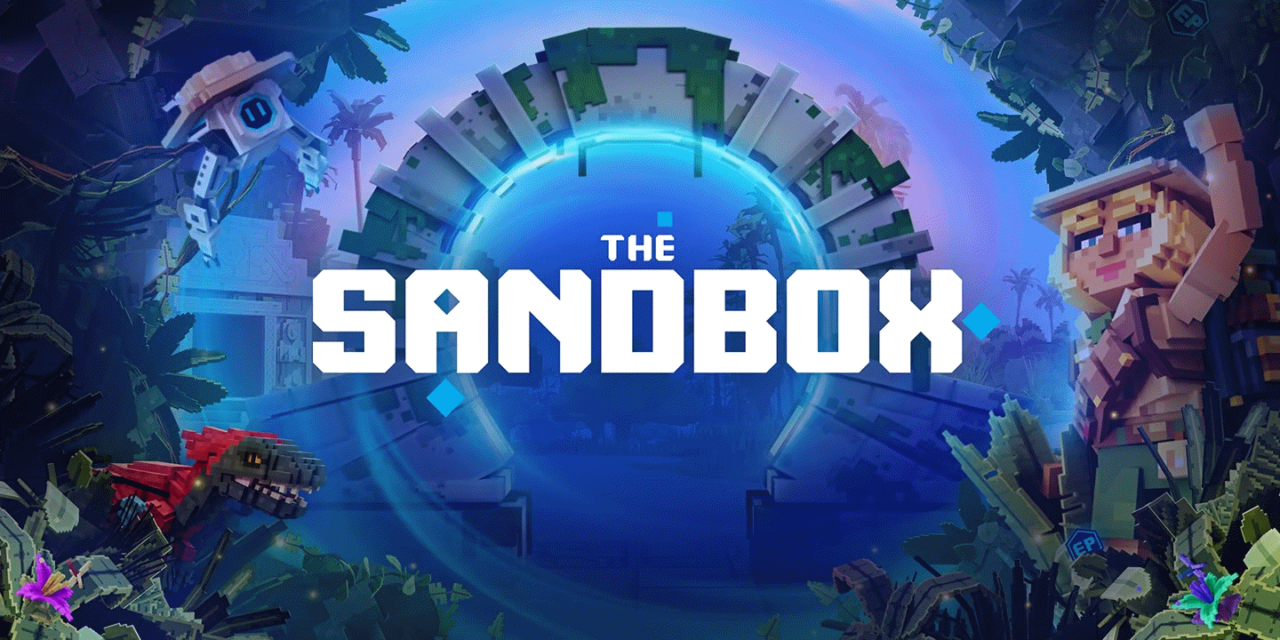Note that the following information is intended for informational purposes only and does not constitute financial advice.
The Sandbox Platform and SAND Token Overview
This article provides an overview of the The Sandbox platform and its native token, SAND, summarizing key information from its whitepaper and highlighting potential benefits and risks to its tokenomics strategy.
What is The Sandbox?
The Sandbox is a decentralized metaverse platform that allows users to create, own, and monetize virtual experiences using blockchain technology. It blends elements of gaming, virtual world creation, and digital asset ownership, all underpinned by user-generated content.
Built on Ethereum and recently exploring multichain support, The Sandbox empowers creators and players through an open economy driven by the SAND token.
The Sandbox: Key Features
- Virtual Land Ownership: Users can purchase LAND NFTs representing virtual plots used to build games, galleries, or social hubs.
- User-Generated Content (UGC): Players and creators can design 3D assets and experiences using VoxEdit and Game Maker, tools accessible to non-coders.
- Decentralized Governance: Through a DAO structure, SAND holders participate in voting on critical platform decisions, ensuring community control.
- Monetization Tools: Creators can earn through experiences, asset sales, and participation rewards.
SAND Token
SAND is the utility and governance token of The Sandbox ecosystem. It powers all transactions and interactions, from purchasing assets to participating in governance. As an ERC-20 token, it’s used for staking, governance, transaction fees, and accessing exclusive experiences.
Frequently Asked Questions
- What is the emission schedule of SAND?
SAND follows a fixed emission schedule, with token allocations vesting over time. A large share is reserved for company reserves, the team, and advisors, unlocking over a 5-year period, with emissions gradually reducing. - What is the maximum supply of SAND?
The total capped supply is 3,000,000,000 SAND tokens. - When will SAND become fully diluted?
According to current estimates, full dilution is expected around the year 2026, depending on future development and token distribution schedules. - How does SAND staking work?
Users can stake SAND to earn passive yields and access exclusive NFTs or in-game rewards. Staking pools have been launched on Ethereum and Polygon, offering rewards in SAND and mSAND.
SAND Token Utilities
- Access: Required to play games, customize avatars, and purchase assets.
- Governance: SAND holders vote on updates, feature development, and LAND fund allocations.
- Staking Rewards: Incentives for staking, often enhanced by partnerships or special events.
- Transaction Medium: Used for buying/selling LAND, assets, and services in the marketplace.
The Tokenomics Strategy
The Sandbox has adopted a deflationary, utility-focused tokenomics model to drive engagement, incentivize user participation, and support a self-sustaining metaverse economy. It mirrors strategies seen in platforms like Decentraland (MANA) or Axie Infinity (AXS), with heavy focus on long-term vesting, gradual emissions, and real utility backing token value. A sizable percentage of tokens is held by the foundation and is deployed to encourage creator growth and ecosystem expansion.
Potential Benefits
- Deflationary Pressure via Utility: As more users engage with The Sandbox, demand for SAND increases due to its role in gameplay, transactions, and staking. This dynamic is designed to create upward price pressure, similar to MANA in Decentraland.
- Incentive Alignment: The allocation strategy (team, advisors, users, staking rewards) incentivizes both short-term and long-term participation, much like Axie Infinity’s dual-token model which aims to reward growth sustainably.
- Creator Economy Boost: A significant portion of SAND is allocated for creators and the ecosystem fund, encouraging constant innovation and community retention.
- DAO Governance: Token holders shape platform evolution, enhancing user loyalty and decentralization.
- Gas Fee Mitigation: The Sandbox integrates with Polygon to reduce gas fees for users. It also pays some of the fees on users’ behalf, reducing friction.
Potential Risks
- Emission Overhang: With a large percentage of SAND still to be released, investor dilution remains a key concern, especially if platform growth does not match token unlocks — an issue also faced by projects like Flow or The Graph.
- Platform Dependence: Token value is heavily tied to The Sandbox’s user adoption and content quality. If usage stagnates, token demand and utility could decline, reducing value.
- Centralization Risk in Early Phases: Despite long-term DAO ambitions, early governance and token supply remain influenced by the founding team and investors — a critique also seen with platforms like Solana or Apecoin DAO.
- Gas Fees: Though paying for users’ gas fees reduces market friction, this represents an expense that must be recuperated elsewhere, such as through higher transaction fees.
Simulating the SAND Token
The Machinations diagram above models the key systems governing the circulation and value of the SAND token, using publicly available information and the following official diagram from the Sandbox official site:

Due to some information being unavailable, the model presents a theoretical use-case for simulating the long-term flow and distribution of SAND tokens.
Note that where relevant information is unavailable, the model uses fictional numbers. These include the present share of tokens among different entities (investors, users, treasury, etc.), the rates of exchange of tokens between these entities, and some system-level variables that are not disclosed in the whitepaper.
Connections are either purple or blue: purple connections indicate an assumed or unknown quantity, such as the rate at which SAND is bought or sold; blue connections represent explicitly known quantities, such as transaction fees.
Starting in the centre, Revenues obtained in SAND are collected and distributed in a 50/50 ratio between the “Company” and the Foundation. The “Company” is the name given to those rewards which are collected directly by the Sandbox developers, while the Foundation is a collection of SAND used for funding platform activities and incentives, including Staking Rewards, Creator Funds and Play-to-Earn Prizes.
SAND that is distributed to the Company is divided between the Company Reserve and the Company Treasury. SAND from both these stores can reenter the market, however they have a Lockup period, meaning they cannot enter the market before x time. For the Company Reserve, for instance, tokens are locked for six months and cannot reenter the market until after that length of time.
Though not all of the mechanics of token reentry are modelled here, we offer the example of gas fee payments, which the developers subsidize. Since gas fees are not paid in SAND, they must be directly or indirectly exchanged for whatever currency is required (likely ETH).
The Foundation distributes SAND for three core purposes: Staking Rewards, Creator Funds and Play-to-Earn Prizes. For simplicity, staking is modelled as paying out a premium on the amount staked. By default, this Payout Ratio (i.e. the proportion of the amount staked that is rewarded) is 0.2, meaning stakers get 20% more tokens than what they staked. We also assume for simplicity that staking has a Lockup Period of six months.
Creator Funds are the second use of SAND collected by the Foundation. These funds include grants and other investments into creators on the platform, who may use these funds to develop games, apps and other experiences in the ecosystem. Investors & Stakers also contribute to the funding of these initiatives.
The final primary source of SAND is from Play-to-Earn Prizes. Such prizes incentivize users to engage with the platform by rewarding healthy activity in the ecosystem.
In this model, we assume non-staking, non-investing users contribute a net outflow of SAND tokens, i.e. they purchase more than they sell (see On Market pool). By contrast, we assume Investors & Stakers sell more SAND than they buy in the long-term. Some inflow of SAND onto the market also comes from the activities of the Company.
For typical Users, SAND is primarily used for trading of NFTs (see NFT Trading Fees). For every transaction, a 5% fee is applied. Half of this fee (i.e. 2.5%) serves as revenue for the Sandbox, funding the Company and the Foundation; the other half is sent to the Creators of the NFT, i.e. the developers of the game or experience that minted the NFT.
Other uses of SAND for Users include Premium NFT Sales and Subscriptions & Services. These are all offered by the Sandbox ecosystem and are direct Revenues for funding the Company and the Foundation.

